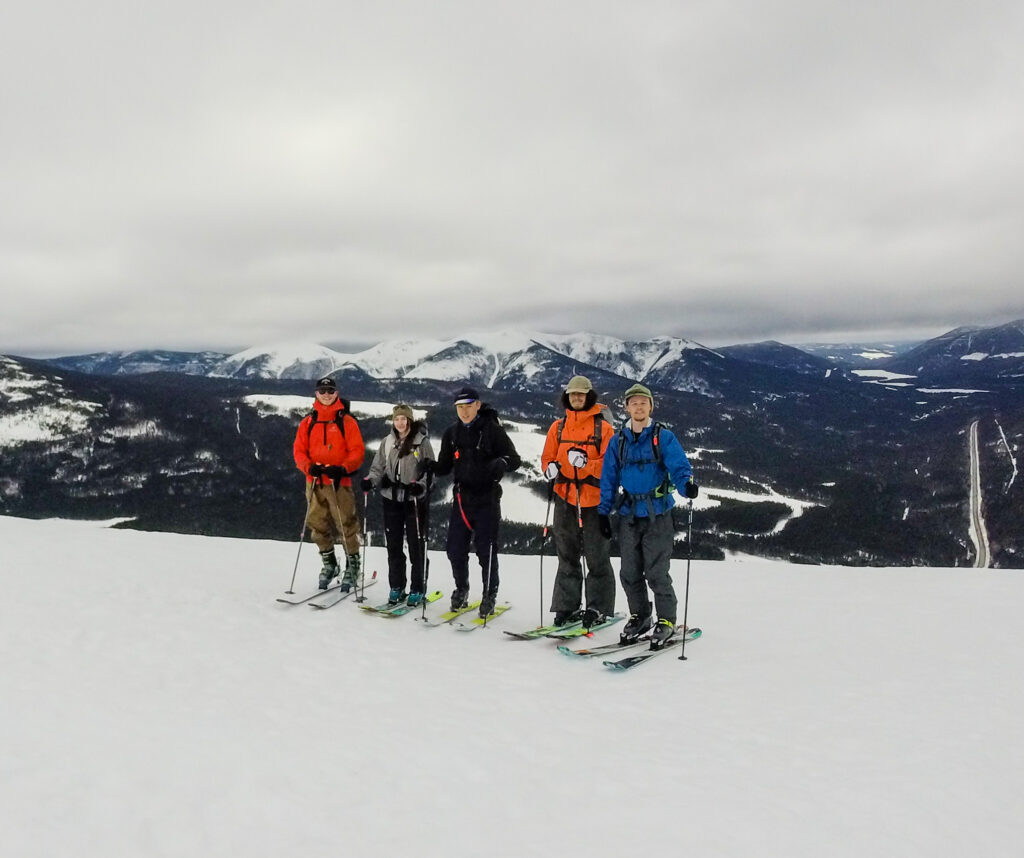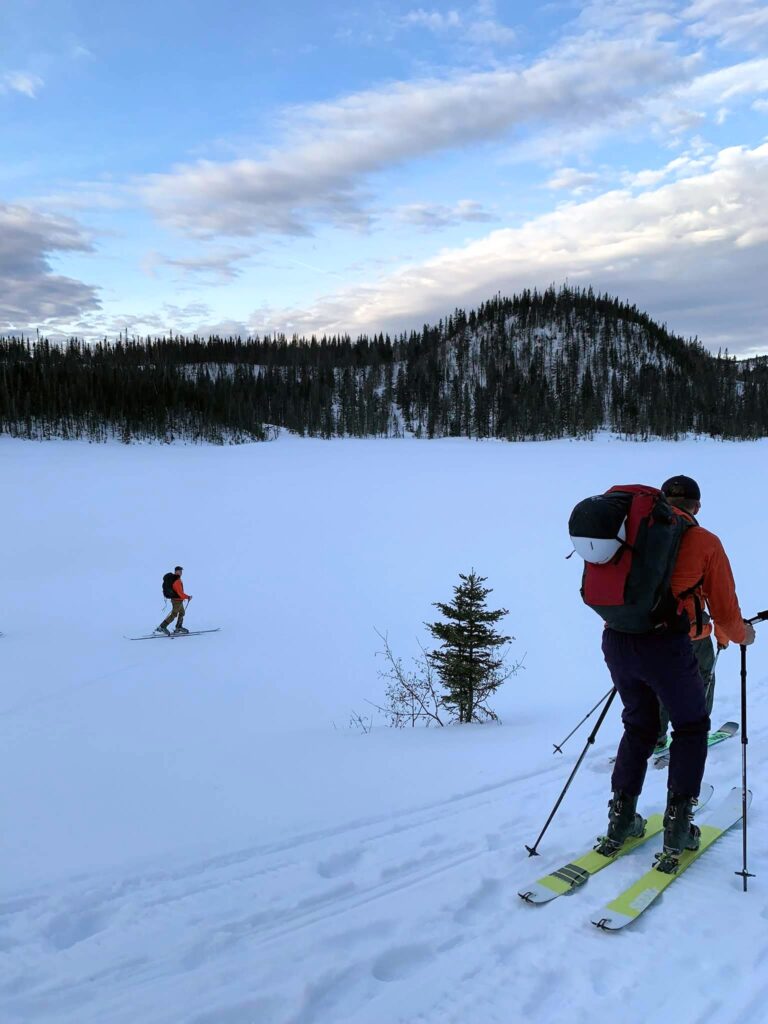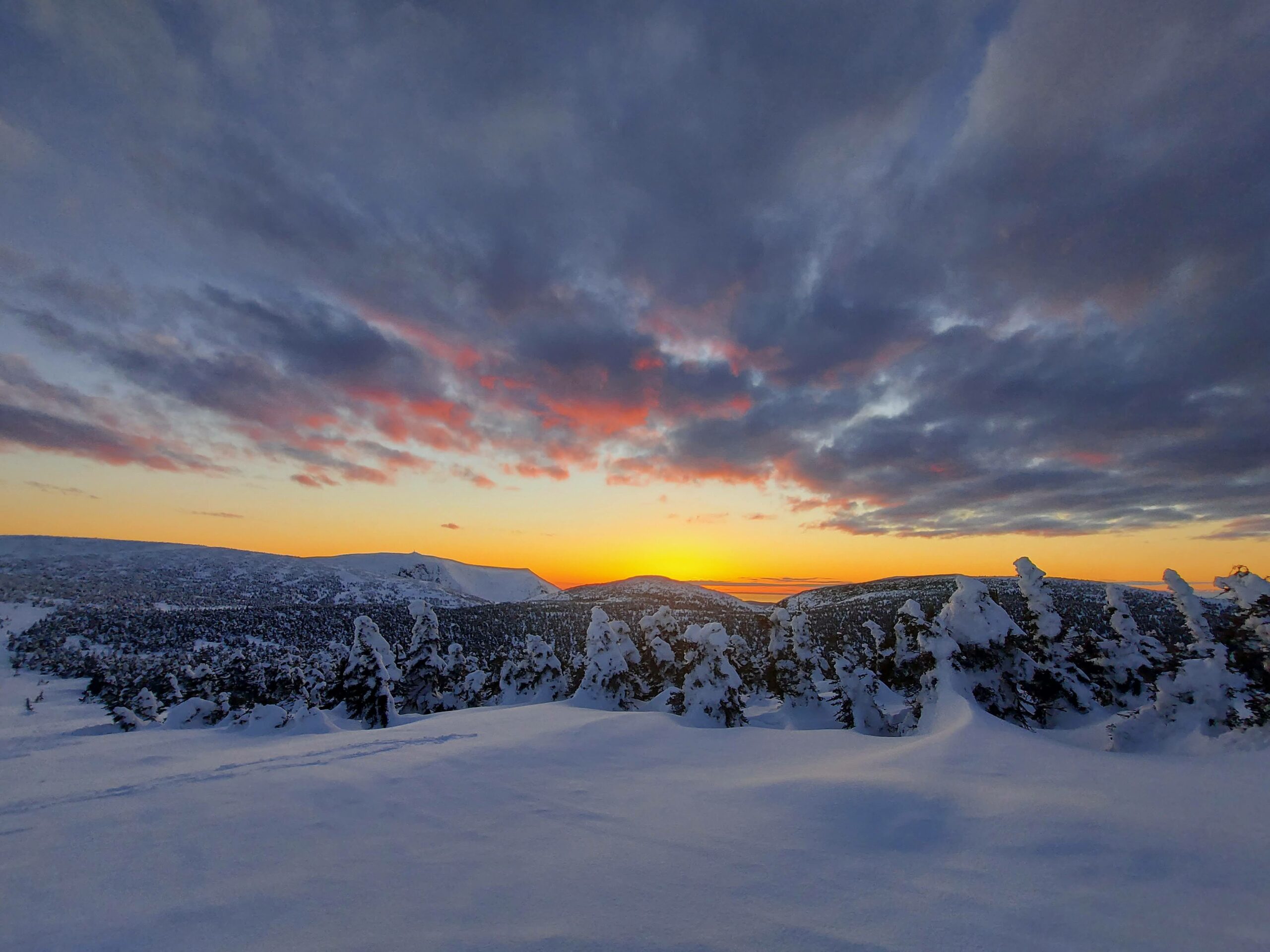Are you a downhill skier looking for a challenge? Want to escape the crowds of resort skiing? Have you considered ski touring? Ski touring is done off-piste and outside of ski resorts in more remote areas of the mountain without the use of lifts or transport up the hill. Skins placed on the bottom of skis allow the skier to walk or “skin” uphill which is much easier than hiking without skis. Many people think of the Rockies and Western Canada when they think of these adventures, but Eastern Canada has ski touring too! Ski touring is a more adventurous form of skiing for experienced and fit alpine skiers willing to understand and navigate risk in the backcountry.

Gaspé Peninsula shown on map of Eastern Canada
Why the Chic-Chocs Mountains?
My team and I chose the Chic-Choc Mountains for our expedition. For people living in Eastern Canada, it is much less expensive to travel to the Chic-Choc Mountains than the Rocky Mountains. The Chic-Chocs are located in the central part of the Gaspe Peninsula in Eastern Quebec. It’s a long drive from Ontario but doable. The Chic-Chocs are the best place east of the Rocky Mountains for ski touring and has the possibility for multi-day expeditions with accommodations in alpine huts.

Our group on Mont Hog’s Back Photo By: Duncan Knight
My team and I spent our first day touring Mont Hog’s Back. On day two we began the Mount Logan circuit where we spent the next five days ski touring from hut to hut. The Mount Logan circuit allowed us to experience a wide variety of terrain in an endless playground of snow even in April. We booked our hut accommodations for each night in advance though Société des établissements de Plein air du Québec (SÉPAQz. We found that having the gear transported made it much easier for us to move and we were able to bring more gear than if we were just carrying it. Being able to move quicker allowed us to ski more and be more comfortable in complex and exposed terrain.
Tips
- Practice in Low-Risk Terrain! Get accustomed to your touring skis by practicing skinning and skiing at your local resorts which allow this.

Me Training at Dacre Heights in Eastern Ontario Photo By: Jarod Higgins
- Take an Avalanche safety course! AST-1 Course (Avalanche Safety Training Level 1) is recommended as the minimum training before heading into the backcountry. The course is two days long and provides you with the most basic knowledge of the risks and safety measures for traveling in the backcountry. This course will teach you how to use the essential gear you need: shovel, beacon and probe in order to be prepared for an avalanche in the backcountry.

Me Wearing an Avalanche Airbag Photo By: Jarod Higgins
- Monitor weather and avalanche patterns before your trip and understand what it means for the snow conditions. Here is the link to the Avalanche Canada Chic-Choc Mountains Bulletin
- Gear Shuttles are worth it! It will make your trip much more enjoyable and safer. You need to be able to move quickly in the backcountry and being bogged down with loads of extra gear won’t allowyou to do so. I highly recommend organizing a shuttle with SÉPAQ. It will cost between 30-50$ per bag of up to 45lbs per day. When my team did this trip, we had all of our food, cooking gear, sleeping gear, and anything that wasn’t needed during the day shuttled which allowed us to move much quicker. Here is more information about Baggage Transportation
- Set up Avalanche Canada to send an SMS to your Garmin Inreach or another satellite device. This is vital to know what the snow conditions are. There is no service in the Chic-Choc Mountains.Skiing without knowing the avalanche forecast is foolish. Here is the information on how to set up Avalanche Canada SMS

Sunset at La Chouette Cabin Photo By: Duncan Knight
- Have a trip plan. There is no cell phone service in the mountains. Leave a copy of your trip plan with someone who is not on the mountain. They will then know where you will be every day and you can plan a time each day when you will check-in. A check-in could be as simple as an SMS through a satellite device or a call on a satellite phone. Plan extra food in case bad weather comes and you can’t ski out. Sample Gear List
Duncan Knight is from Ottawa, Ontario where he grew up skiing in the Gatineau Hills. He has a Diploma in Business in Outdoor Adventure from Algonquin College and is pursuing a Bachelor of Tourism Management in Adventure Studies at Thompson Rivers University.
*This is just a blog providing advice do your own research before heading into the backcountry and know all of the risks and dangers before*
SÉPAQ. (n.d.). SEPAQ - the largest outdoor network in Quebec. Winter Trail Map 2021-22. Retrieved November 17, 2022, from https://www.sepaq.com/home/index.dot?language_id=1

